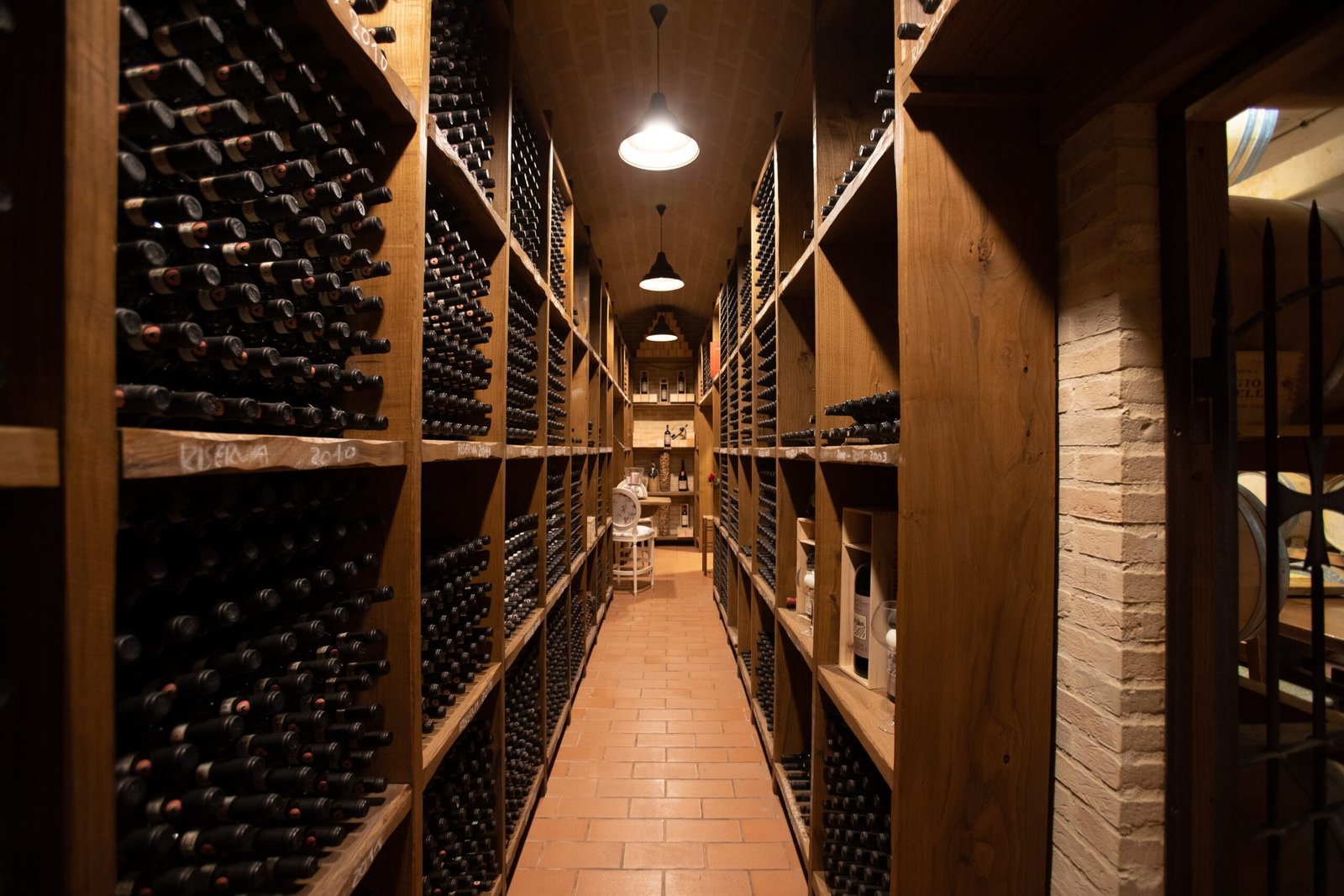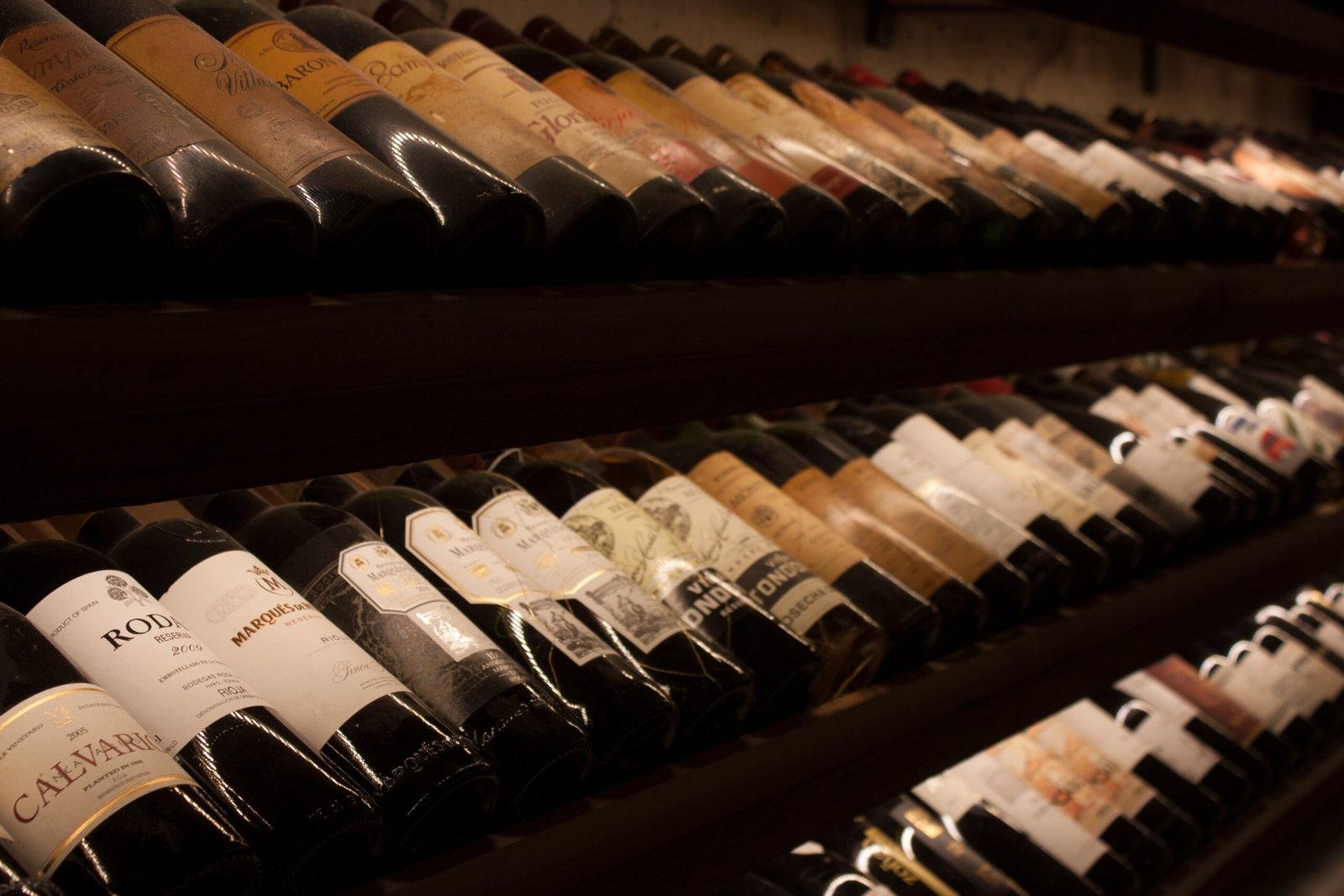Just bought a case of wine but not planning on drinking them right away?
A wine cellar is a great way to store and age your wine collection. However, in order for your wine to be properly stored, it is important to have the right racks to hold the bottles. In this article, we will explore how and why you should make racks for your wine cellar.
In this article, we will show you the importance of having the right racks to hold your bottles of wine. We will discuss the different materials and styles of racks, as well as the benefits of building your own racks, such as cost savings and customization.
Whether you’re a wine lover or just looking for an interesting home improvement project, this article will provide you with the information you need to make the perfect racks for your wine cellar. From design to functionality, we will guide you through the process of creating the perfect wine storage solution for your home.
Key Considerations When Choosing Wine Racks
Whether you are going to build your own bespoke wine racks or select ready-made ones from the store, here are the most important factors to consider:
How long are you planning to store the wine?
Will you store wine to be drunk in the short term (i.e., in under six months)? Or are you planning to store your wine for a longer period?
In most cases, wine racks are only ideal for short-term storage due to the relative lack of temperature and humidity control.
For long-term storage, you’ll need a controlled environment with consistent humidity (around 60%-75%) and a consistent temperature of 11-14˚C. To achieve this, a fully-fledged wine cellar, climate-controlled wine cabinet, or offsite wine storage rather than wine racks.
Quantity of bottles to store
Pretty obvious, but the number of bottles you are planning to store will dictate the size and shape of wine racks you should plan to get.
Obviously, the more bottles you want to store, the bigger the space you’ll need. As a general rule of thumb, you can store between 10 and 15 bottles per square foot.
Also, don’t forget to plan for growth. Consider preparing a space to add more wine racks or one you can convert into a wine cellar.
Single bottle vs. bulk storage racks
Single-bottle racks are typically utilized for aesthetic purposes (as wine display racks,) while bulk storage racks—as the name suggests—are more suitable for storage purposes.
Of course, you can also combine both if you have enough space. For example, you can buy a wine collection in dozens and store them in bulk storage racks first while only displaying one or two in single-bottle racks.
As the wine is drunk over time, you can keep moving the wine collection to the single bottle racks and replace them with newer purchases.
Material choice
There are three main material type choices for your wine rack, each with its own pros and cons:
- Wood: the most popular material choice, but it is thicker and less malleable than the other materials. Wood comes in many different types, but only very few types of wood are suitable as wine rack materials, namely Mahogany, Redwood, and Oak. An important consideration when choosing a wooden wine rack is to make sure they are odorless so that the smell won’t affect your wine.
- Plastic: plastic is light, affordable, and durable. However, as a wine rack material, plastic is very malleable, so they come in a wide variety of sizes and shapes. Since it’s also very light, it’s also easy to move and reposition around, perfect for those who like to redecorate and change things up frequently.
- Metal: metal is very durable and easier to build than wood and can be built thinner than wood wine racks. So, metal wine racks are great choices if you’d like to save some space. Also, metal wine racks have their own aesthetic style that may fit better with modern wine cellars and rooms.
Another consideration when it comes to material choice is whether you plan to use your wine rack outdoors (i.e., for an outdoor party.) If that’s the case, it’s best to choose metal racks with rust-resistant material or coating, as they will last longer.
Bottle size
Most wine racks will only accommodate the standard 750 ml-sized bottles and won’t hold anything longer or larger.
If you’d like to store bottles in different sizes (i.e., champagne bottles, uniquely-sized wines,) then you may need to find wine racks that can hold this specific size or get a custom-made wine rack instead.
- Versatility
Would you also like to use the wine rack as an extra tabletop or side table? Do you also need extra drawers to store wine glasses and bottle openers?
Figure out your exact needs first before deciding on a wine rack design or building your custom rack.
For example, if you’d like to be able to taste wine near the wine rack, consider having a wine rack design with extra drawers to store decanters or glassware. Placing the rack near a sink may also help.
- Storing angle
In general, you need to keep the wine bottles’ corks from drying out. Meaning, you’ll need to keep the wine up against the cork, which can be achieved by having a wine rack that holds the bottles horizontally at a 45-degree angle, leaning slightly forward.
Having the liquid in constant contact with the cork will prevent air from getting into the bottle, which will prevent the wine from spoiling. Not to mention, horizontal racking is space-efficient.
You can get away with storing your wine vertically if you plan to drink this bottle pretty soon. Some newer bottles have alternative closure methods, like glass or plastic corks, which have better sealing.
- Budget
Pretty self-explanatory; what is your available budget for the wine racks?
In general, a budget of around £200 per square foot would be sufficient to get decent-quality wine racks in the store. Many of these off-the-shelf wine racks are modular, so you can upgrade them as you see fit later.
If you’d like a custom wine rack, however, expect to spend at least £300 per square foot, but it can end up being much more expensive depending on material quality, size, and other factors.
Getting the best wine racks for your wine cellar: actionable tips
When it comes to getting wine racks for your cellar, here: are a few actionable tips to keep in mind.
- Select the right materials: There are several materials that can be used to build wine racks, including wood, metal, and plastic. Each material has its own pros and cons. For example, wood is a classic choice that looks great, but it can be expensive and can require more maintenance. Metal is a more affordable option, but it may not look as good as wood.
- Consider the size of your wine collection: Before building your wine racks, it is important to consider the size of your wine collection. You’ll need to have enough room to store all of your bottles, but you don’t want to have too much empty space. Measure the size of your cellar and plan out the dimensions of your racks accordingly.
- Think about the style of your wine cellar: The style of your wine cellar should match the style of your home. If your home has a more rustic or traditional look, then a wooden rack would be a great choice. But if your home has a more modern look, then a metal rack may be a better fit.
- Choose the right size for your bottles: Wine bottles come in different shapes and sizes, so it’s important to choose a rack that will accommodate the bottles you have. You’ll need to have the right size slots to hold your bottles securely.
- Consider the weight of your bottles: When planning your wine racks, it’s important to consider the weight of your bottles. Heavy bottles need to be stored in a sturdy rack that can support their weight.
- Plan for proper ventilation: One of the most important things to consider when building wine racks is proper ventilation. Wine bottles need to be stored in a cool, dark place with good air circulation. Make sure your racks allow for adequate ventilation to keep your wine in the best condition.
- Think about the angle of the racks: The angle of your wine racks can make a big difference in how your wine ages. Bottles should be stored at a slight angle, with the cork facing downward, to keep the cork moist and prevent air from getting into the bottle.
- Think about lighting: The lighting in your wine cellar should be kept to a minimum. Bright lights can damage the wine and make it taste different. Consider using dimmer switches or adding a light sensor so you can control the lighting.
- Create a labeling system: A labeling system can help you keep track of your wine collection. You can use a simple label system that includes the name of the wine, the vintage, and the date it was purchased.
- Plan for expansion: As your wine collection grows, you’ll need to make sure your racks can accommodate more bottles. Consider building your racks with extra slots or with the ability to add more sections in the future.
- Utilize vertical space: Wine racks don’t have to take up floor space. Utilize the vertical space in your cellar by building racks that go up the wall. This will free up floor space and make it easier to access your bottles.
- Consider the humidity level: The humidity level in your wine cellar should be between 50-70%. If the humidity is too high, it can cause mold and mildew to grow. If it’s too low, it can dry out the corks and allow air to enter the bottles. Use a hygrometer to monitor the humidity level and make adjustments as needed.
- Invest in a security system: Wine can be a valuable investment. Consider installing a security system in your wine cellar to protect your collection from theft or damage.
- Plan regular maintenance: Regularly check your wine racks for any damage or wear and tear. Make repairs as needed to ensure the safety and longevity of your wine collection.
- Don’t forget to organize: Organize your wine collection according to grape varietals, regions, vintages, and your personal preferences. This will make it easier to find the wine you’re looking for and will also help you keep track of your collection.
- Add a wine-tasting area: If you entertain guests frequently, consider adding a wine-tasting area to your wine cellar. This can be a small table and chairs or even just a comfortable seating area. It will give your guests a place to sit and enjoy their wine.
- Get creative: Building wine racks doesn’t have to be boring. Get creative and add your own personal touch to your racks. You can paint them, add a custom design, or even create a theme for your wine cellar.
Wrapping Up
If you’re not comfortable building your own racks or if you’re not sure where to start, consider getting professional help. A carpenter or wine cellar designer can help you design and build the perfect racks for your collection.
Leessa has been involved with a wide variety of custom wine cellar and wine rack projects in London and surrounding areas. Leesa London strives to provide expert and technical advice to help design and deliver the best possible solution for all types of wine rooms and wine storage of all sizes.
Give us a call at +44 1 707 328100/+44 7 727 777 113 or visit our Showroom (by appointment only) right away.



